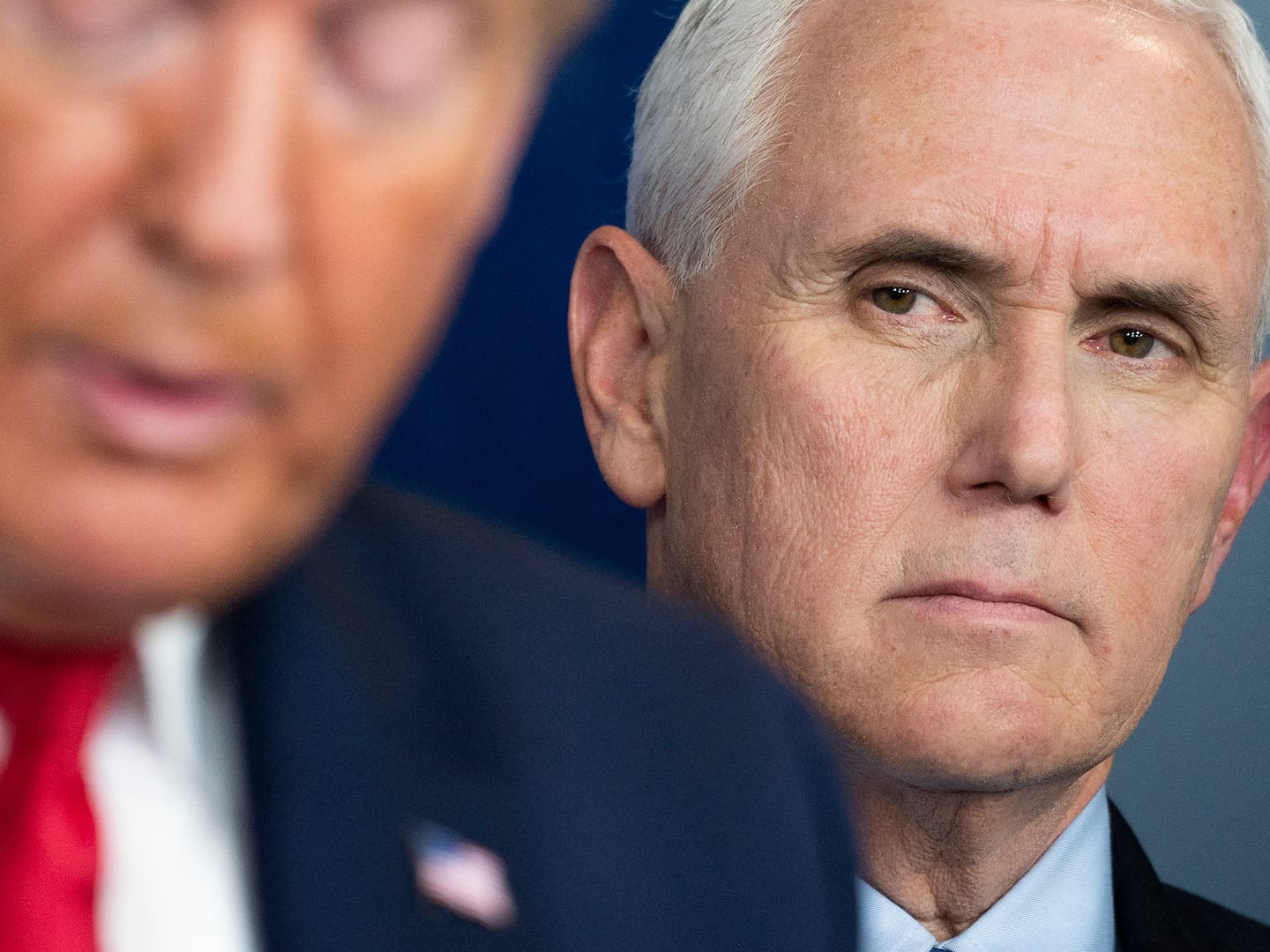The top law enforcers in charge of ensuring the U.S. Capitol was secure on Jan. 6 claimed that a series of unanswered calls, withheld information, and conflicting orders led to the systematic breakdown that allowed thousands of MAGA rioters to breach the government building.
Testifying before two Senate committees on Tuesday, former Capitol Police Chief Steven Sund slammed the Pentagon for taking hours to send in backup on Jan. 6—even as other law-enforcement leaders pleaded for help as rioters breached the building and forced elected leaders into hiding.
While Sund insisted he asked for the National Guard just after 1 p.m., Paul Irving, the former sergeant-at-arms for the House, said he did not remember the conversation and did not get an official request until “shortly before 1:30 p.m.” Troops, however, were not approved to help overwhelmed officers at the Capitol until 2:10 p.m.
D.C. Metropolitan Police Department Acting Chief Robert Contee also testified about his shock when he learned that the National Guard did not want to send troops into the Capitol during the insurrection—because they “did not like the optics of boots on the ground” at the government building.
“This assault on the Capitol has exposed weaknesses in the security of the most secure city in the country,” Contee said, adding that when MPD received the call for help on Jan. 6 they “responded immediately.”
But Irving insisted that the initial intelligence that he saw “did not support” that there would be a coordinated assault at the Capitol—“nor was that contemplated in any of the inter-agency discussions that I attended in the days before the attack.”
“We all believed that the plan met the threat and that we were prepared. We now know that we had the wrong plan. As one of the senior security leaders responsible for the event, I am accountable for that. I accept that responsibility,” Irving said.
Irving added that Capitol Police were privy to intelligence provided by the FBI and the Department of Homeland Security that led to that conclusion. Contee also added that while he was “surprised by the reluctance” to immediately send in backup for the U.S. Capitol Police officers fending off thousands of MAGA rioters, the intel before Jan. 6 did not indicate that protest would go off the rails.
“To be clear, available intelligence pointed to a large presence of some of the same groups that had contributed to violence in the city after demonstrations in November and December,” Contee said. “The District did not have any intelligence pointing to a coordinated assault on the Capitol.”
When backup finally arrived hours later at the Capitol on Jan. 6, Contee added, police were too overwhelmed to combat the siege.
Former Capitol Police Chief Sund added during his Tuesday testimony that rioters coordinated the attack via radio communications and improvised weapons—and that officers did not stand a chance because “these criminals came prepared for war.”
He added that the deadly attack was a “military-style coordinated assault” that could have been minimized if federal agents provided accurate and complete intelligence with law enforcers. Sund stressed that while Capitol Police were ready for violent groups, they were not ready to be outnumbered by an insurrection.
“Casting blame solely on the United States Capitol Police leadership is not only misplaced, but it also minimizes what truly occurred," Sund said. “No entity, including the FBI, provided any new intelligence on Jan. 6.”
One issue, Sund and Contee suggested Tuesday, was that the intelligence community failed to identify white-supremacist groups as a serious threat—a blind spot they urged lawmakers to address to ensure another insurrection does not happen again.
“The intelligence did not make it where it needed to be,” Contee said, adding that the FBI only sent over raw intelligence on Jan. 5 and that a possible attack on the Capitol should “warrant a phone call or something.”
Sund agreed, stating that lawmakers need “to look at the whole intelligence community and the view they have,” particularly around white supremacist groups.
Pointing the finger at the lack of National Guard support, Sund added that during the insurrection, top security personnel hopped on a conference call to discuss how to secure the Capitol, including providing reinforcements of 125 unarmed National Guard. During the call, Sund and Contee both testified that a top Pentagon official, Lt. Gen. Walter Piatt, said he didn’t want to deploy the National Guard because of the “optics” of armed troops in front of the Capitol.
Sund added, “Mr. Irving stated that he was concerned about the ‘optics’ of having the National Guard present and didn’t feel that the intelligence supported it.”
During Tuesday's testimony, Irving said he did not remember the phone call.
Irving, however, hit back on Sund’s accusations, stating that “had Chief Sund, Senate Sergeant at Arms Stenger, or any of the law enforcement leaders involved in the planning concluded that the intelligence called for the National Guard… I would not have hesitated to ensure the National Guard’s presence."
All officials, however, testified Tuesday that the Jan. 6 insurrection was a “coordinated attack.”
Five individuals died during the violent riots. Four were pro-Trump protesters, including Air Force veteran Ashli Babbitt, who was shot and killed by a police officer after attempting to break into the Speaker’s Lobby. Capitol Police Officer Brian Sicknick was killed after allegedly being struck with a fire extinguisher by rioters. In the aftermath of the Jan 6. siege, at least two officers who responded to the riots at the Capitol have died by suicide.
Capt. Carneysha Mendoza, who has been with the Capitol Police for almost two decades, was the first to testify before the Senate Homeland Security and Government Affairs and Senate Rules committees about her response to the riots, detailing how she sustained “chemical burns to my face… that still have not healed.”
“As an American and Army veteran, it is sad to see us attacked by our fellow citizens,” she said.
She testified that her arm got pinned while trying to hold back a crowd of rioters from entering the Capitol—which was thankfully freed by another officer—and she could smell “military-grade CS gas” in the air.
“There are certain lessons that always stuck with me after 9/11. One of those lessons is knowing the unthinkable is always possible—so be ready,” Mendoza, who worked on recovery efforts for the Pentagon attack, added. “We could’ve had 10 times the amount of people working with us and I still believe the battle would’ve been just as devastating.”








